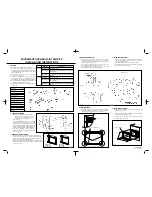
8.3.6
Defining the switching window active status for the distance value
NOTE
The procedure for configuring the Q1 and Q2 digital outputs is identical. The configura‐
tion is illustrated on switching output Q1.
The active state describes the relationship between the switching state (active or inac‐
tive) and the voltage present on the switching output (high or low) (
see "Signal inputs/outputs", page 18
Parameter
Factory setting
LOW:
Output potential for active switching state: low voltage
Output potential for inactive switching state: high voltage
LOW
HIGH:
Output potential for active switching state: high voltage
Output potential for inactive switching state: low voltage
8.3.7
Defining the switching point for the object speed value
NOTE
The procedure for configuring the Q1 and Q2 digital outputs is identical. The configura‐
tion is illustrated on switching output Q1.
The switching point SP designates the speed value at which the switching event is
triggered (
see "Switching functions", page 16
Parameter
Factory setting
Switching point:
0 m/s to 20 m/s
5 m/s
8.3.8
Defining the switching point hysteresis for the object speed value
NOTE
The procedure for configuring the Q1 and Q2 digital outputs is identical. The configura‐
tion is illustrated on switching output Q1.
Unwanted switching can be prevented by entering a hysteresis if the determined object
speed value fluctuates around the set switching points (
).
8
REFERENCE
74
O P E R A T I N G I N S T R U C T I O N S | DT1000 PROFIBUS DP and DL1000 PROFIBUS DP
8024560/1A19/2021-06-30 | SICK
Subject to change without notice
















































